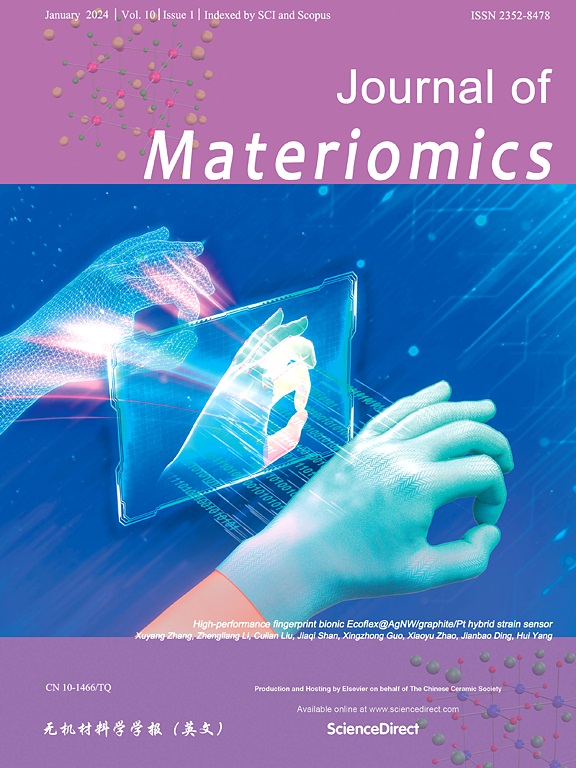通过调整顶部播种固溶生长 SiC 晶体过程中的温度分布来抑制表面粗糙度。
IF 9.6
1区 材料科学
Q1 CHEMISTRY, PHYSICAL
引用次数: 0
摘要
SiC颗粒的自发成核和巨大的宏观台阶导致生长晶体表面粗糙,这是SiC晶体顶种固溶生长的主要原因。为了抑制表面粗糙度,通过改变坩埚和感应线圈的相对位置来调整温度梯度。数值模拟和实验结果表明,随着坩埚相对位置的减小,由于整个溶液表面温度的升高和生长表面附近温度梯度的减小,生长晶体表面形貌变得更加光滑,附着在生长表面的自发成核粒子也越来越少。因此,当坩埚与感应线圈的相对位置为70 mm时,生长表面附近温度梯度较低,溶解速度较大,碳浓度较高,碳过饱和度较小,最有利于消除小SiC颗粒的自发成核,抑制4H-SiC晶体的表面粗化,最大半宽(FWHM)为37.5 arcsec。本文章由计算机程序翻译,如有差异,请以英文原文为准。


Suppression of the surface roughness by adjusting the temperature distribution in the top-seeded solution growth of SiC crystal
Spontaneous nucleation of SiC particles and giant macroscopic steps result in the surface roughness of the grown crystal for the top-seeded solution growth of SiC crystal. To suppress the surface roughness, the temperature gradient was carefully adjusted by changing the relative position of the crucible and induction coils. The numerical simulation and experimental results show that the surface morphology of the grown crystal becomes smoother and there are fewer spontaneous nucleation particles attached to the growth surface with the decrease in the relative crucible position, due to the increase of temperature at the entire solution surface and the reducing of temperature gradient near the growth surface. Accordingly, a lower temperature gradient, a larger solution velocity, a higher carbon concentration, and a smaller carbon supersaturation near the growth surface can be obtained when the relative position between the crucible and the induction coil is 70 mm, which is demonstrated to be the most favorable for the elimination of spontaneous nucleation of small SiC particles and suppressing surface roughening with the full width at half maximum (FWHM) of 37.5 arcsec of 4H![]() SiC crystals.
SiC crystals.
求助全文
通过发布文献求助,成功后即可免费获取论文全文。
去求助
来源期刊

Journal of Materiomics
Materials Science-Metals and Alloys
CiteScore
14.30
自引率
6.40%
发文量
331
审稿时长
37 days
期刊介绍:
The Journal of Materiomics is a peer-reviewed open-access journal that aims to serve as a forum for the continuous dissemination of research within the field of materials science. It particularly emphasizes systematic studies on the relationships between composition, processing, structure, property, and performance of advanced materials. The journal is supported by the Chinese Ceramic Society and is indexed in SCIE and Scopus. It is commonly referred to as J Materiomics.
 求助内容:
求助内容: 应助结果提醒方式:
应助结果提醒方式:


